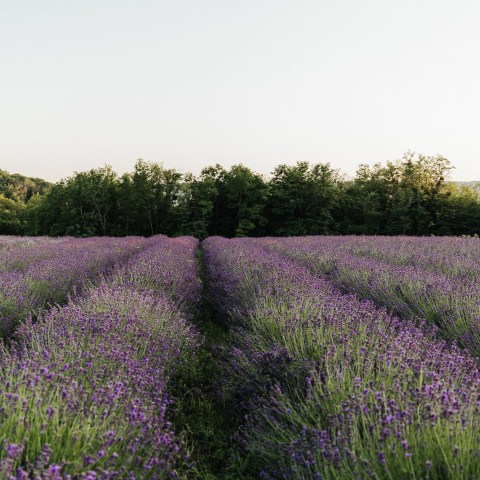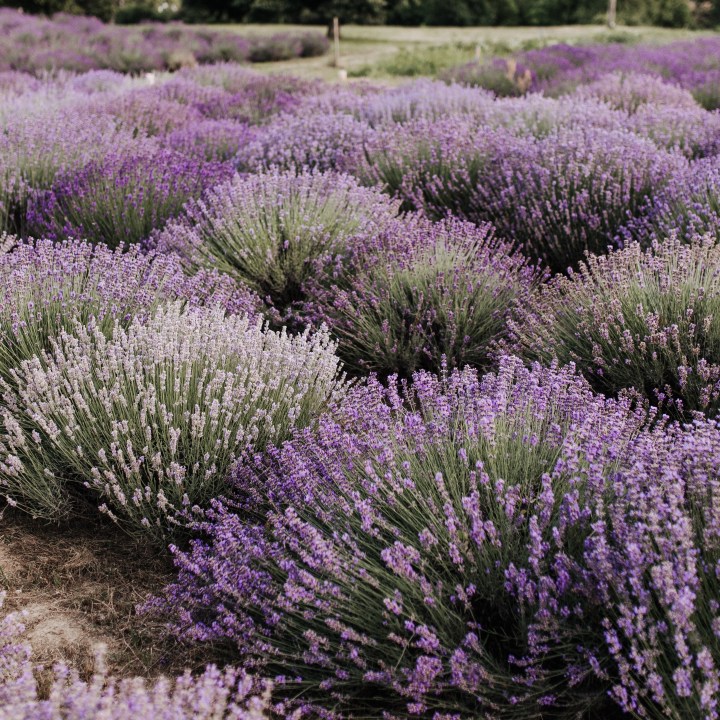About CRÉEM
Our story
We believe in the power of nature, purity, and consciousness - these are the values we have built our family business around. Our cosmetic products’ key ingredient is lavender essential oil produced in our own distillery and flowers straight from our lavender fields. We handle this precious plant with the utmost care and in accordance with all principles of organic farming.
The positive effects of lavender oil on the body and soul have been known for centuries, also it's one of the most versatile essential oils. It is also excellent for medicinal purposes and as an ingredient in cosmetics as well. It's not only wonderful for relaxation but is also one of the most effective antispasmodics and anti-inflammatories. We take special care of this extraordinary plant which also means all CRÈEM cosmetics are handmade.


About us
If you walk along the paths of our family estate in the village of Visz, you will be captivated by the beautiful Somogy landscape. The two-hectare lavender plantation not only provides an aesthetic experience with the sight of soothing purple plants, but also embodies our family's respect for nature and a deep spiritual connection with it. It is this lavender and the essential oil produced on the estate that gave us the idea for CRÈEM. This bond is what launched the business in 2020.
The relationship with lavender goes back many years: Our mom introduced essential oils to our family several years ago, not only for cosmetic but also for medicinal purposes. Our father, a respected surgeon in his profession, also discovered many ways of using lavender for medicinal purposes. Some of the family members are involved in the nurturing of the lavender, harvesting and distilling the flowers, so each product preserves a drop of the family's contribution.
Our lavender farm
In 2019, we founded our plantation with lavender seedlings of Tihany origin, which covers an area of two hectares and currently consists of 14 thousand plants.In 2021, we built our lavender distillery with the help of Hagyó Kft. from Miskolc.
The cultivation of lavender on our farm is fully in line with the principles of regenerative agriculture. The plant itself (due to its Mediterranean origin) requires sunshine, is extremely drought tolerant, and no major natural pests or pathogens have yet appeared in the country. The ground cover between the rows was achieved by grassing (turfing), retaining rainfall, and preventing topsoil erosion. Weed control between the stems requires special attention: in spring, mechanical weeding (hand weeding) is carried out twice. It's important to avoid weeds around the stems as we approach the harvest, as they can interfere with the harvested flowers and reduce the quality of the oil obtained by distillation.
We don't use any chemical products: no herbicides or pesticides have been used in this area in the past 20 years. The quality of the soil is checked annually, and any nutrients deemed necessary are replenished in the light of lab results. In 2021 we signed a contract with Biokontroll and we follow the guidelines of organic farming strictly. We routinely use alginite, a proven organic rock in powdered form, as a natural source of nutrients, in the environment around the plants. Every three years, the plantation is supplied with mature cow manure.


Distillation
The distillation is done with steam produced by an electric steam generator from purified (iron, manganese, etc.) well water. The distillery at Visz was designed by engineer Mónika Rugyai and built by Hagyó Ltd. of Miskolc. So we can say that our distillery is a unique construction, following the guidelines of traditional distilleries, but with unique features.
What are these features?
First, the size and shape of the pot still. It differs from other designs in that the still is taller but smaller in diameter. This allows the steam and the plant mass to come into contact for a longer time and over a larger surface area. The steam is injected from under the cauldron using specially designed nozzles. The basket containing the vegetation (which closely follows the shape and dimensions of the cauldron) functions as a closed cylinder, based on a purpose-designed perforated plate. All these details are designed to homogenize the steam flow inside the cauldron. The steam is evacuated through a pipe constructed on top of the cauldron. Through this pipe, the oil-rich steam enters the condensing tower, where it comes into contact with the cold water space through which the steam flows.
Harvest
The harvest is carried out in the second half of the full blossoming phase. This is usually a two to three-week period starting in the second half of June . It's important to keep a close eye on the rate of bloom as the budding process progresses, because in a hot, dry summer, flowering can take place in as little as a week. We do not harvest during wet periods, as it is known from literature that the optimum time for harvesting lavender is after at least ten days of sunshine.
Harvesting is done by hand with electric hedge trimmers. The cut inflorescence is placed in numbered bags and immediately taken to the distillery. There, the bags are weighed, and approximately 160-200 kg of vegetation is placed in a still. The distillation process takes 60-70 minutes, after which lavender oil and lavender water are produced. The oil from each pot is treated separately and its components are analysed separately. This method helps us to understand the differences in the active ingredients of the oil extracted from the plants harvested in the morning and afternoon in different areas.
The residual plant matter at the end of the distillation process is placed in a composter and, after three years of maturation, is returned to the soil in the autumn in the form of chopped straw. One month after harvesting, the entire field is weeded again, the grass between the rows is cut and returned to the stubble.
The entire production process on our Visz lavender farm meets the criteria for organic production and is controlled by BIOKONTROLL.


...
This is where the steam is condensed, resulting in a "hydrolate" leaving the tower, which is then led to a collection tank. The oil, which is lighter than water, is separated at the top of the hydrolate that collects in the tank, from where it is led to a holding tank. The same happens with increasing quantities of lavender water during the distillation process.
Another unique feature of our system is that there are 34 points in the vapour path where we can intervene in some way: reduce or increase the temperature, pressure, flow rate, etc. These interventions and the continuous control are carried out by means of a computer program designed for this purpose. Based on the experience gained so far, the parameters that we use to ensure optimal oil recovery are stored in the form of "recipes". We use two recipes, the main differences between which are the total distillation time, the initial steam pressure in the pot and the different flow rates (with many small differences).
The general inspection of the equipment and the necessary maintenance are carried out twice a year: in the weeks before the harvest and about six weeks after the harvest.
Lavender essential oil and lavender water
The lavender vapor condensed during the distillation process is called the hydrolate, which separates into two components in the receiver tank. The lavender oil, which is lighter than water, is extracted from the top, while the liquid that remains underneath is called lavender flower water. The latter also has a high oil content and a strong fragrance. The oil is stored in a numbered bottle per batch. Samples of the oil from each batch (cauldron) are taken and subjected to microbiological and gas chromatographic (GC) analysis.
The GC test aims to accurately detect the active ingredients of the oil. This means that the active substances in the oil exceed the minimum values in the pharmacopeia, while any harmful substances are below the official maximum. The oils are stored in a cool place in a one-liter dark laboratory bottle. CRÉEM uses the entire quantity produced each year, so only fresh lavender oil is used in our products.


...
Lavender oil can be stored for several years without any significant quality deterioration. Since 2020, we have separated samples from each harvest, which are subjected to repeated GC testing year after year. Our experience so far is that the quality of the oil tested has not changed in four years.
We release the required quantity from the oil storage for the current production processes in the CRÈEM lab. Each bottle of oil is precisely documented, including the year, the serial number of the still, the area where the oil is grown (the farm is divided into seven such fields), the harvest date (morning and midday harvests are separated), the time between harvest and distillation and the distillation recipe. This allows us to present, in a unique way in the cosmetics market, the unique indicators of each oil used in the production of each of our products, including the GC laboratory result of the quantity. Our intention is to provide our customers with all the information they need to better understand the composition of the product.
The lab
CRÈEM's manufacturing laboratory was officially ready in the summer of 2023. András Tallér (A and T Kft.) was our consultant in its creation.
The production space follows modern international standards to a large extent and was GMP certified (SGS ISO 22716:2017) in the year of its opening. Our two permanent employees, Lilla Vető and Petra Bók, carry out all phases of the production activity. Professional supervision is provided by Tea Tallér (A and T Kft.).
One of the most important values of our brand is that the triple unit of cultivation-distillation-production is realized on the same farm, close to each other. This way the whole process is tightly controlled, well-documented and transparent.


